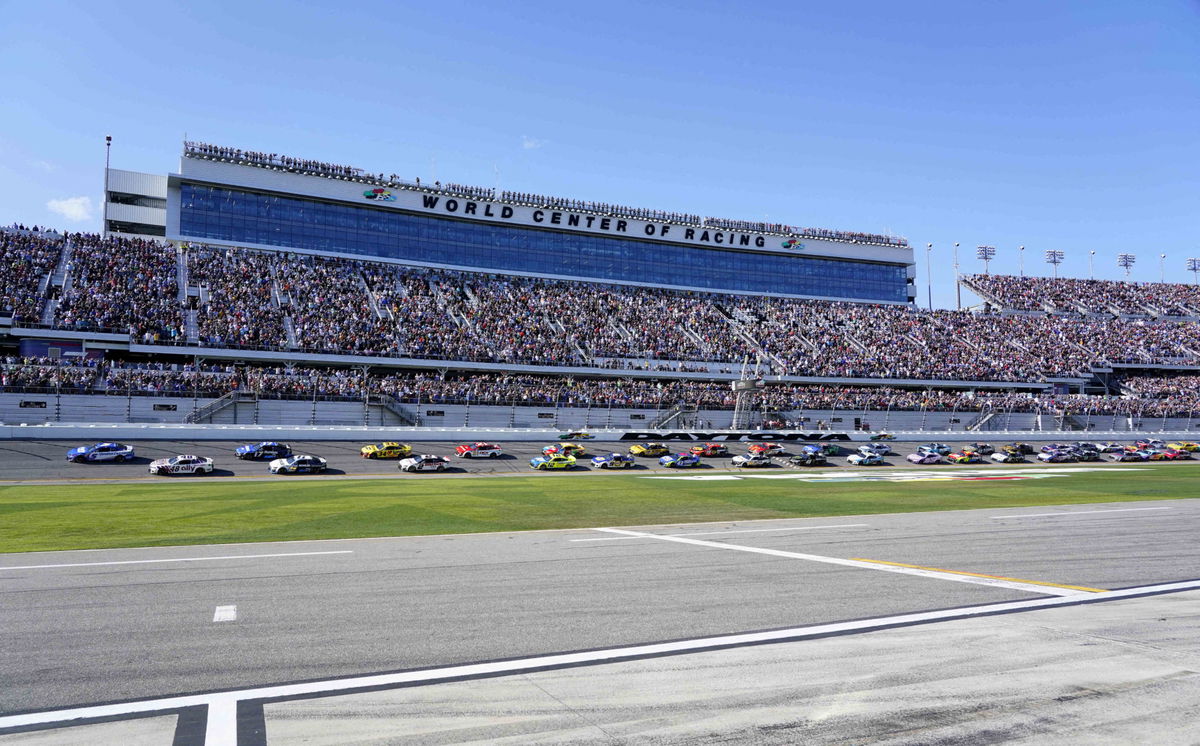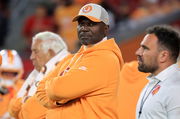
USA Today via Reuters
Feb 20, 2022; Daytona Beach, Florida, USA; NASCAR Cup Series driver Kyle Larson (5) and NASCAR Cup Series driver Alex Bowman (48) lead the field on the green flag the Daytona 500 at Daytona International Speedway. Mandatory Credit: Mike Dinovo-USA TODAY Sports

USA Today via Reuters
Feb 20, 2022; Daytona Beach, Florida, USA; NASCAR Cup Series driver Kyle Larson (5) and NASCAR Cup Series driver Alex Bowman (48) lead the field on the green flag the Daytona 500 at Daytona International Speedway. Mandatory Credit: Mike Dinovo-USA TODAY Sports
An NBA All-Star game, an Olympics ceremony, and still the modest but roaring stock cars of NASCAR beat them. This isn’t a twisted ‘Cars meets Space Jam’ plot of a Disney movie but the reality of things as they happened last weekend.
Watch What’s Trending Now!
For those of you who don’t know (who knows why), last weekend, the Daytona 500, the NBA All-Star Game, and the closing ceremony of the Winter Olympics in Beijing fell on the same day.
And if reports and statistics are to be believed over opinions, the Great American Race took the checkered flag.
ADVERTISEMENT
An estimated 8.9 million viewers tuned in to watch rookie Austin Cindric win the Daytona 500. This number, this year, was 41% higher than the game centered around LeBron James’ return to Cleveland.
The 8.9 million viewers of stock cars also stand tall, by 35%, compared to the 6.6 million of Olympic closing ceremonies.
The Daytona 500 (8.9m viewers) beat same day coverage of the Olympic closing ceremonies (6.6m) by 35%.
The last time the two went head to head in 2018 the closing ceremonies outrated Daytona by 59%.
— Michael Mulvihill (@mulvihill79) February 23, 2022
ADVERTISEMENT
There’s no doubt now that NASCAR’s strategies and bold steps have fruitfully paid off with statistical backing. Be it racing on new, bolder venues or changing how a race is seen (Clash at the Coliseum), the holes in the sinking ship have been covered as the sport starts its sail to the top of the mountains.
However, there’s a catch.
ADVERTISEMENT
NASCAR of now vs. NASCAR of yesterday
Undoubtedly, NASCAR’s viewership remaining high in comparison to NBA and Olympics is great news for fans and for everyone involved in sports.
But when you take the same 8.9 million number in comparison to what that number was less than 10 years ago, you begin to realize just how far NASCAR is from its glory days.
ADVERTISEMENT
In 2013, the Daytona 500 brought in 16 million viewers. That number then fell to 9 million in 2014, then rose to 13 million in 2015, then fell to 11 million in 2016 and 2017, 9 million in 2018 and 2019, 7 million in 2020, 4.8 million in 2021, to the most recent, 8.9 million in 2022.
Top Stories
Forced to Leave FOX, Cowboys Legend Troy Aikman Says ESPN Is Like ‘U.S. Government’ & Clearly Distinguishes the Two Networks

Who Is Paige Shiver? All About Michigan Football Staffer & Daughter of Veteran Bears Scout Jeff Shiver

Charley Hull Opens Up on Traumatic Divorce from Ex-Husband for the First Time Ever

Todd Bowles Points Fingers at Baker Mayfield & Co. in a Strong Statement That Could Get Him Punished After Bucs Loss

Cowboys Legend Troy Aikman Teases NFL Comeback After Airing FOX’s Dirty Laundry

What Settlement Agreement Have Michael Jordan & NASCAR Reached? Everything to Know From Evergreen Charters to Payout


USA Today via Reuters
Feb 20, 2022; Daytona Beach, Florida, USA; NASCAR Cup Series driver Austin Cindric (2) reacts after winning the Daytona 500 at Daytona International Speedway. Mandatory Credit: Mike Dinovo-USA TODAY Sports TPX IMAGES OF THE DAY
So keeping all of that in mind, there is progress compared to the ‘competition’ and certainly compared to last year, but it isn’t exorbitantly mind-blowing.
ADVERTISEMENT
There is still a long way to go for the sport that is trying to revolutionize its future while trying to touch the highs of its past.
ADVERTISEMENT
ADVERTISEMENT
ADVERTISEMENT

